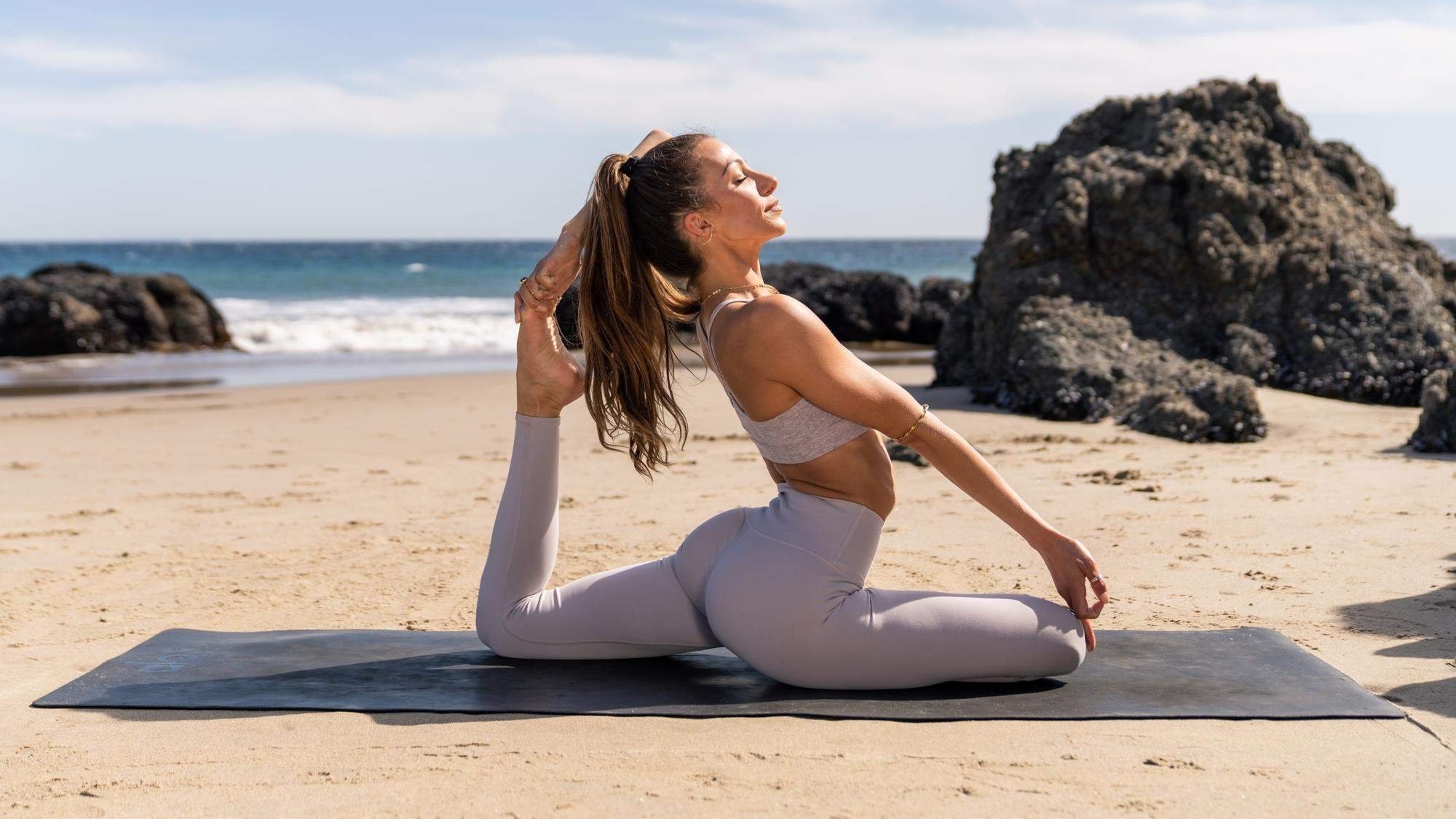Pose Breakdown: One-Legged King Pigeon
Puff out your chest like a proud pigeon. With its graceful shape and air of confidence, One-Legged King Pigeon Pose (Eka Pada Rajakapotasana), sometimes just called King Pigeon Pose, is perhaps the most regal expression of the Pigeon family of asanas. Because it’s a heart-opener and a hip-opener at the same time, some feelings could arise — but in this brave and kingly position, you’re ready to tackle that vulnerability head-on.
While this pose has some royally good benefits for your body and mind, it can be a lot to ask of your knees, hips, and spine at first. Don’t force anything, and remember to warm up your hips before you jump in! You’ll be strutting your stuff in no time.
Benefits of One-Legged King Pigeon Pose
Opens your chest and shoulders
Stretches your thighs, groin, hip flexors, abdomen, and neck
Stimulates abdominal organs
Contraindications
Avoid this pose if you have knee, hip, spine, or shoulder injuries. Stop if you experience any knee sensitivity and adjust your knee support — for your back knee, add some padding like a blanket or a folded mat, and for your front knee, move your front foot closer further inward. If you’re still having discomfort, stop and talk to your doctor before trying again.
Warm-Up Poses for One-Legged King Pigeon Pose
Half Pigeon Pose
Cobra Pose
Figure 4 Stretch, supine or standing
Seated Forward Fold
Bound Angle With Forward Fold
How to Do One-Legged King Pigeon Pose
Start in Pigeon Prep Pose, with one leg bent in front of you with the shin on your mat, and your other leg long behind you. Your front shin can be parallel to the top of your mat, or you can bring your front foot closer into your body.
Square your hips and squeeze your inner thighs together.
Press your front-leg shin down into the mat.
Open toward your back leg and reach the same-side hand back, grabbing your foot and pulling it in.
Reach around to stabilize your foot, and bring the same side arm of your back leg to the outside of your back leg (flipped grip).
Turn your hand back and grab hold of the pinky-toe-edge of your back-leg foot.
Make sure your elbow is facing down, then turn toward the front of the mat.
Lift your elbow up and overhead. If you can balance, reach your other arm up, bend at the elbow, and grab your foot.
Lift your belly and chest, kick your foot back, and look up to complete the pose.
Follow Up Poses for One-Legged King Pigeon Pose
Full Pigeon Pose
90-90 Stretch
Supine Eagle
Supine Twist
Happy Baby
How to Do One-Legged King Pigeon Pose With Props
If you’re having trouble reaching your back foot, try using a strap: Loop your strap underneath the top of your foot while it’s still on the ground, then hold it with one or both hands. Your arms should be in the same position as they would without the prop, with your elbow(s) up and overhead. A bolster under your hips can take some strain off your hips and knees.
You can also practice this pose with your back shin against a wall. Make sure to pad your knee really well!
There are multiple ways to use a chair for support. Here are a few:
Pad your back knee with a folded yoga mat or blanket and prop the top of your back foot on the edge of a chair. Instead of reaching for your toes, reach for the chair!
Place your hips and front knee on top of the chair and let your rear leg fall behind you.
Practice the pose facing a chair, and place your hands on the chair to keep your torso safely aloft.
Eka Pada Rajakapotasana Meaning
Eka Pada Rajakapotasana translates into “One-Legged King Pigeon Pose”: “Eka” for “one,” “pada” for “leg” or “foot,” “raja” for “king,” “kapota” for “pigeon,” and, finally, “asana” for “posture” or “seat.”
Like many popular Vinyasa poses, One-Legged King Pigeon first starts showing up in the work of BKS Iyengar and Pattabhi Jois, both students of Tirumalai Krishnamacharya — so it likely started appearing between the 1930s and the 1950s.
While pigeons hold significance in Vedic and Hindu mythology — they represent Yama, god of death and justice — that doesn’t mean that Pigeon Pose is about anything more than just a pigeon. Iyengar, in his 1966 book Light on Yoga, says it’s called King Pigeon because “the chest is pushed forward like that of a strutting pigeon” or a pouter pigeon.
Give One-Legged King Pigeon a royal fanfare with Kayla Nielsen’s full-length King Pigeon Flow, available for free with a 14-day trial to Alo Moves.


